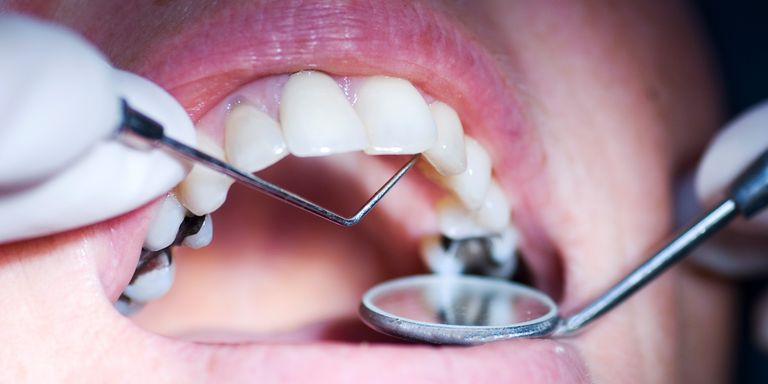
It’s the diagnosis no one ever wants to hear: a cavity. (Not to be dramatic or anything.)
Sure, it’s not exactly deadly, but cavity treatment is potentially pricey, and sitting in the dentist’s chair for a filling isn’t the most pleasant way to spend an afternoon.
So it’s only natural to wonder if there’s an alternative to the drill-and-fill routine…so is there?
First things first: What’s a cavity—and how does one form?
Basically, a cavity is a small hole in your tooth as a result of tooth decay from bacteria, according to the National Institute of Dental and Craniofacial Research.
That cavity-causing bacteria is in everyone’s mouth, and combines with food to form plaque, a thin, sticky substance that coats your teeth. And yes, this is precisely why your dentist is always talking up dental hygiene—if you brush and floss after you eat, no sugars remain to help bacteria flourish and, eventually, eat away at your teeth, says Valerie Martins, D.M.D., a board-certified periodontist and founder of Martins Dental Partners in Beverly, MA

Cavities start off with tooth decay in your tooth’s enamel—the outermost layer of your tooth, says Martins. At that point, it’s still a pre-cavity (a.k.a. an incipient caries lesion). If the decay continues to spread to your dentin—the middle layer of your tooth—it then becomes a full-blown cavity.
That’s when you usually get it treated or filled—but if the decay continues to worsen and reaches the pulp of your tooth, it can cause some serious issues like pain, infection, and even tooth loss, according to the NIDCR.
Do I always have to get a cavity filled, or can it ever go away on its own?
Sorry to be the bearer of bad news, but: “For adult, permanent teeth, I don’t know of any magical cure where you have a true cavity where you can fix it outside of drilling and filling it,” says Martins. Buzz. Kill.
But remember those pre-cavities? You might actually be able to reverse those.
Your dentist can spot pre-cavities during exams or on x-rays, where they’ll appear as a small shadow. “As long as it’s within the enamel layer it’s not a true cavity—it’s a pre-cavity—so it’s something we watch and can reverse,” says Martins, noting that it’s difficult to predict if the pre-cavity is reversible or will develop into a true cavity.

Instead of filling a pre-cavity, the goal is to re-mineralize your teeth, restoring enamel that’s been eaten away by acid. And that process can be as simple as diligent, regular flossing and using toothpaste with fluoride, says Martins.
“I’ve done this myself—I saw a shadow [on my x-ray] and had a bit of sensitivity, and then I put on fluoride and I flossed like crazy. Six months later, I took another x-ray and the tooth had re-mineralized,” says Martins.
If the pre-cavity is on the top surface of your teeth, where some people’s teeth have grooves, a fluoride-releasing sealant can be applied, to prevent further growth and aid healing. This process might involve a drill, but it’s super fine, so you won’t feel it.
So, if I have an actual cavity, there’s really only one way to treat it?
Yep. Unlike pre-cavities, where fluoride treatment, stellar dental hygiene, and sealants can sometimes reverse the problem, a filling is the only solution for a real cavity.
To treat a cavity, your dentist will start by numbing your mouth. Once you’re sufficiently numb, they’ll use a drill to remove the soft, decayed portion of the tooth, then fill the remaining hole with a fluoride-releasing polymer to rebuild the tooth structure, says Martins.
But here’s the good news: Most dentists aren’t drill-happy. In fact, drilling a tooth is a last resort. “I wouldn’t put a drill to a tooth unless it’s a true cavity. Once you put a drill to a tooth, it’s never the same,” says Martins, so at least if you do need a cavity filled, know that it’s totally necessary.
The bottom line: Pre-cavities can be reversed through extra-good dental care…but, sorry, actual cavities need the drill.
Source: Read Full Article
